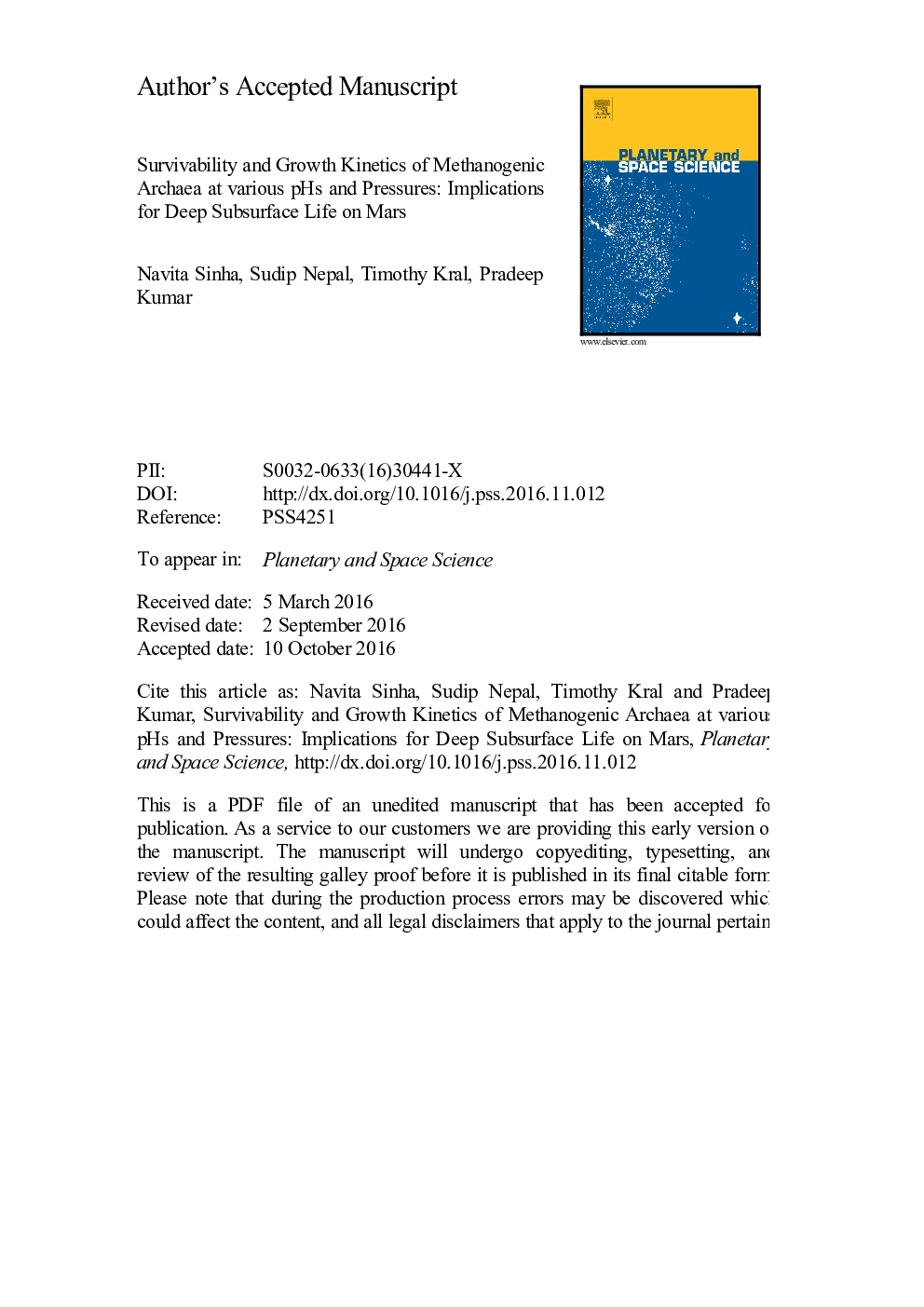| Article ID | Journal | Published Year | Pages | File Type |
|---|---|---|---|---|
| 5488046 | Planetary and Space Science | 2017 | 30 Pages |
Abstract
In order to understand the effect of different pHs and pressures on the metabolic activities of M. wolfeii, we also calculated their growth rate by measuring methane concentration in the headspace gas samples at regular intervals. In acidic conditions, the growth rate (γ) of M. wolfeii increased with the increase in pressure. In neutral and alkaline conditions, the growth rate (γ) of M. wolfeii initially increased with pressure, but decreased upon further increase of pressure. To investigate the effect of combined pH, pressure, and temperature on the morphology of M. wolfeii, we took phase contrast images of the cells. We did not find any obvious significant alteration in the morphology of M. wolfeii cells. Methanogens, chemolithoautotrophic anaerobic microorganisms, are considered as ideal model microorganisms for Mars. In light of research presented here, we suggest that at least one methanogen, M. wolfeii, could survive in the deep subsurface environment of Mars.
Related Topics
Physical Sciences and Engineering
Earth and Planetary Sciences
Geophysics
Authors
Navita Sinha, Sudip Nepal, Timothy Kral, Pradeep Kumar,
